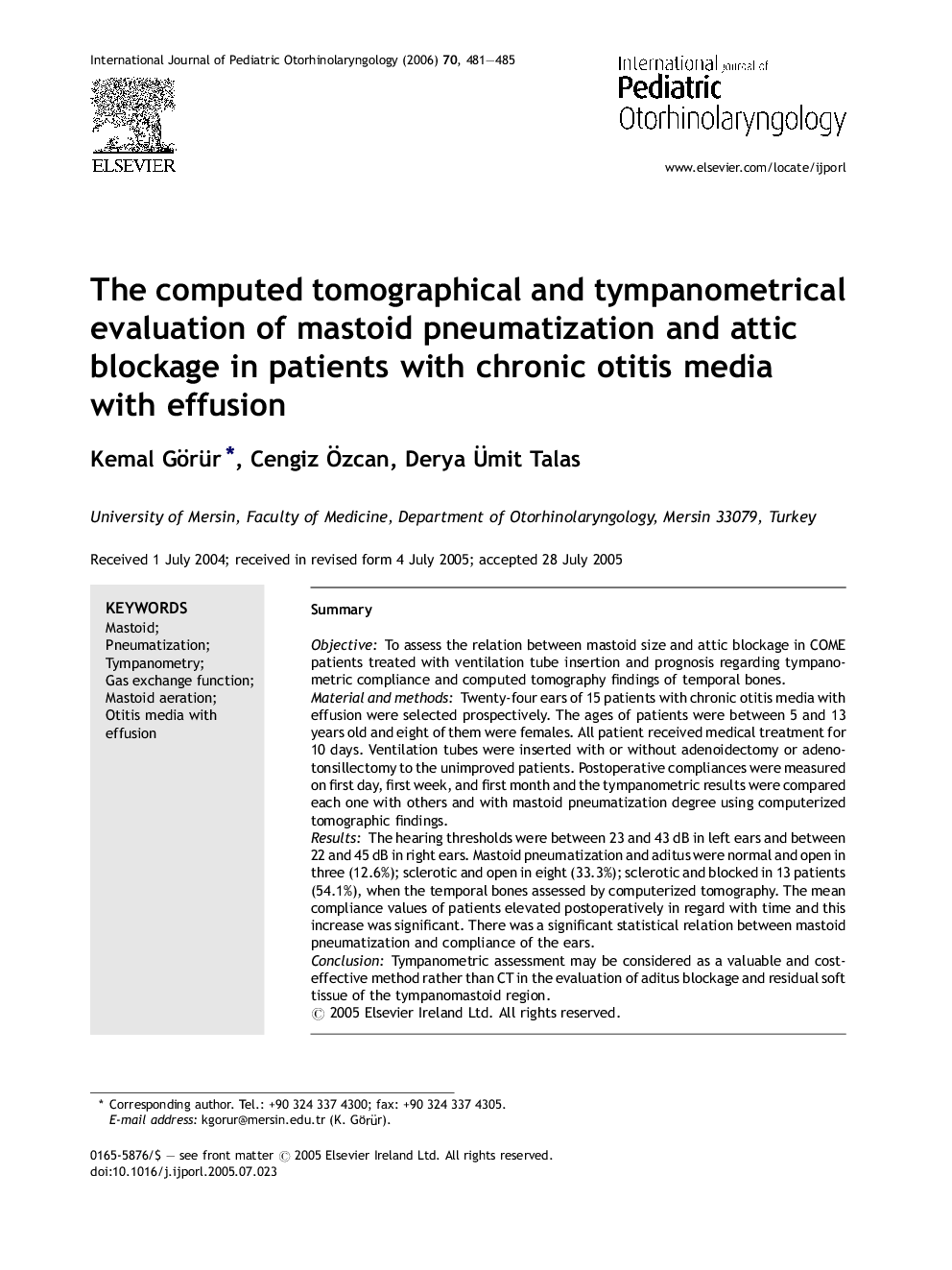| Article ID | Journal | Published Year | Pages | File Type |
|---|---|---|---|---|
| 4115223 | International Journal of Pediatric Otorhinolaryngology | 2006 | 5 Pages |
SummaryObjectiveTo assess the relation between mastoid size and attic blockage in COME patients treated with ventilation tube insertion and prognosis regarding tympanometric compliance and computed tomography findings of temporal bones.Material and methodsTwenty-four ears of 15 patients with chronic otitis media with effusion were selected prospectively. The ages of patients were between 5 and 13 years old and eight of them were females. All patient received medical treatment for 10 days. Ventilation tubes were inserted with or without adenoidectomy or adenotonsillectomy to the unimproved patients. Postoperative compliances were measured on first day, first week, and first month and the tympanometric results were compared each one with others and with mastoid pneumatization degree using computerized tomographic findings.ResultsThe hearing thresholds were between 23 and 43 dB in left ears and between 22 and 45 dB in right ears. Mastoid pneumatization and aditus were normal and open in three (12.6%); sclerotic and open in eight (33.3%); sclerotic and blocked in 13 patients (54.1%), when the temporal bones assessed by computerized tomography. The mean compliance values of patients elevated postoperatively in regard with time and this increase was significant. There was a significant statistical relation between mastoid pneumatization and compliance of the ears.ConclusionTympanometric assessment may be considered as a valuable and cost-effective method rather than CT in the evaluation of aditus blockage and residual soft tissue of the tympanomastoid region.
